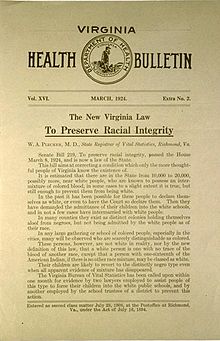
| Part of a series on |
| Genocide |
|---|
 |
| Issues |
| Related topics |
| Category |
Paper genocide is the systemic removal of a group of people from historical records, such as censuses, which gives the impression that that group has disappeared or become extinct. A 2023 article published by Cultural Survival defines the term as "intentional destruction of documents and records related to a particular group of people, usually with the intent of erasing their histories and cultures",[2] while a 2019 article in National Geographic characterizes the term thusly: "Paper genocide means that a people can be made to disappear on paper".[3] The term is often used to refer to government policies regarding Native Americans in the United States and the indigenous peoples of the Caribbean, primarily the Taíno. According to Cultural Survival, paper genocide can lead to generational and historical trauma for the communities affected.[2]
- ^ Glagola, Jack; Collins, Natalie (March 27, 2024). "'Paper genocide': Virginia tribal leaders speak on race law's centennial". The Commonwealth Times. Archived from the original on May 20, 2024. Retrieved November 17, 2024.
- ^ a b Bullock, Chenae (February 2, 2023). "Black History Includes Native American and African-American Generational and Historical Trauma". Cultural Survival. Archived from the original on October 8, 2024. Retrieved November 17, 2024.
- ^ Estevez, Jorge Baracutei (October 14, 2019). "On Indigenous Peoples' Day, meet the survivors of a 'paper genocide'". National Geographic. As told to Nina Strochlic; Photographs by Haruka Sakaguchi. ISSN 0027-9358. OCLC 643483454. Archived from the original on March 24, 2021. Retrieved November 16, 2024.
